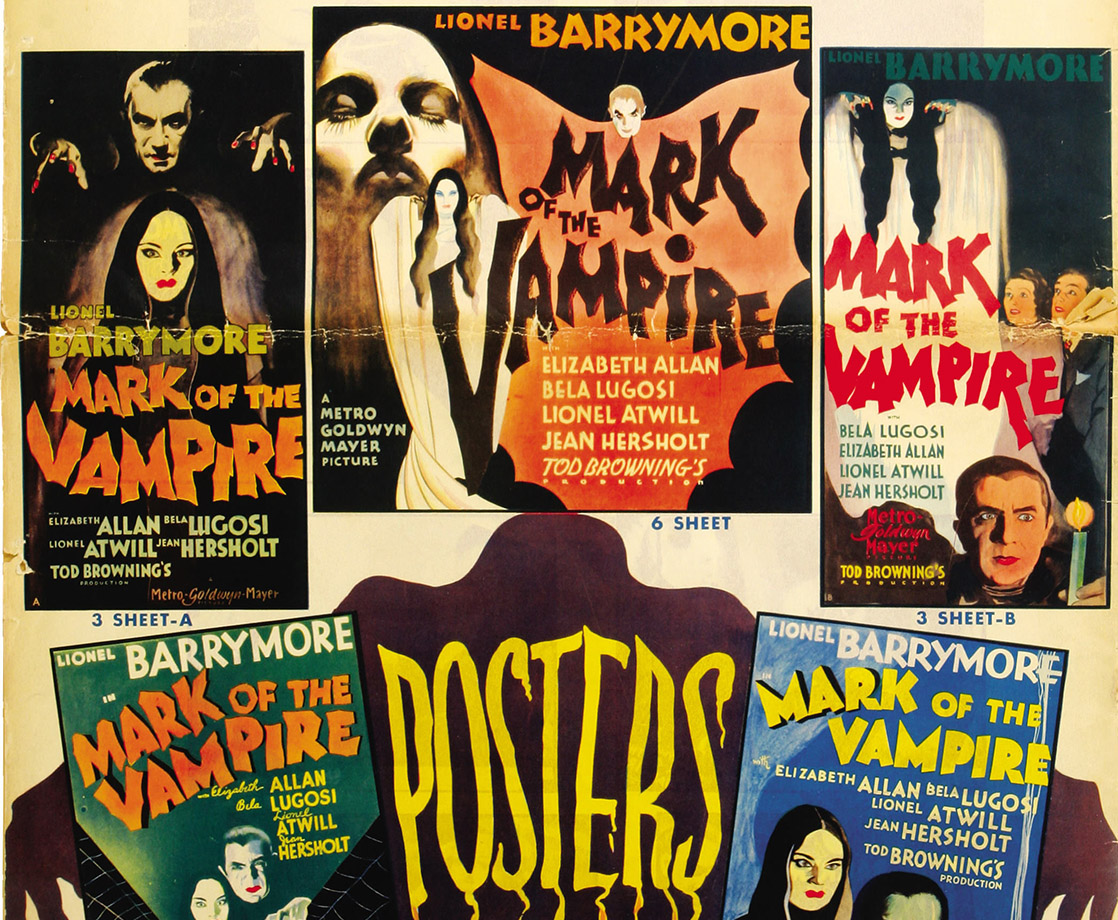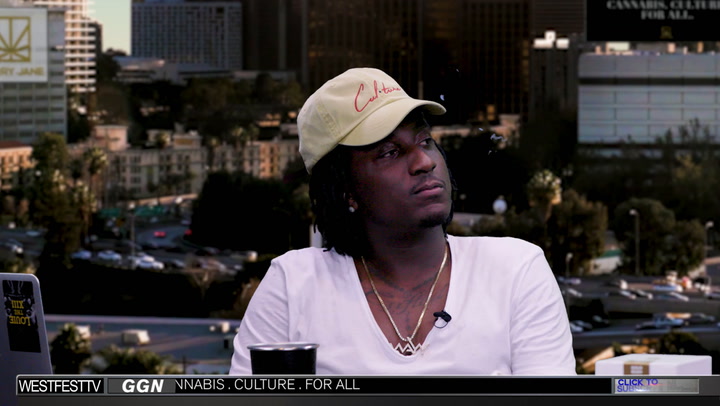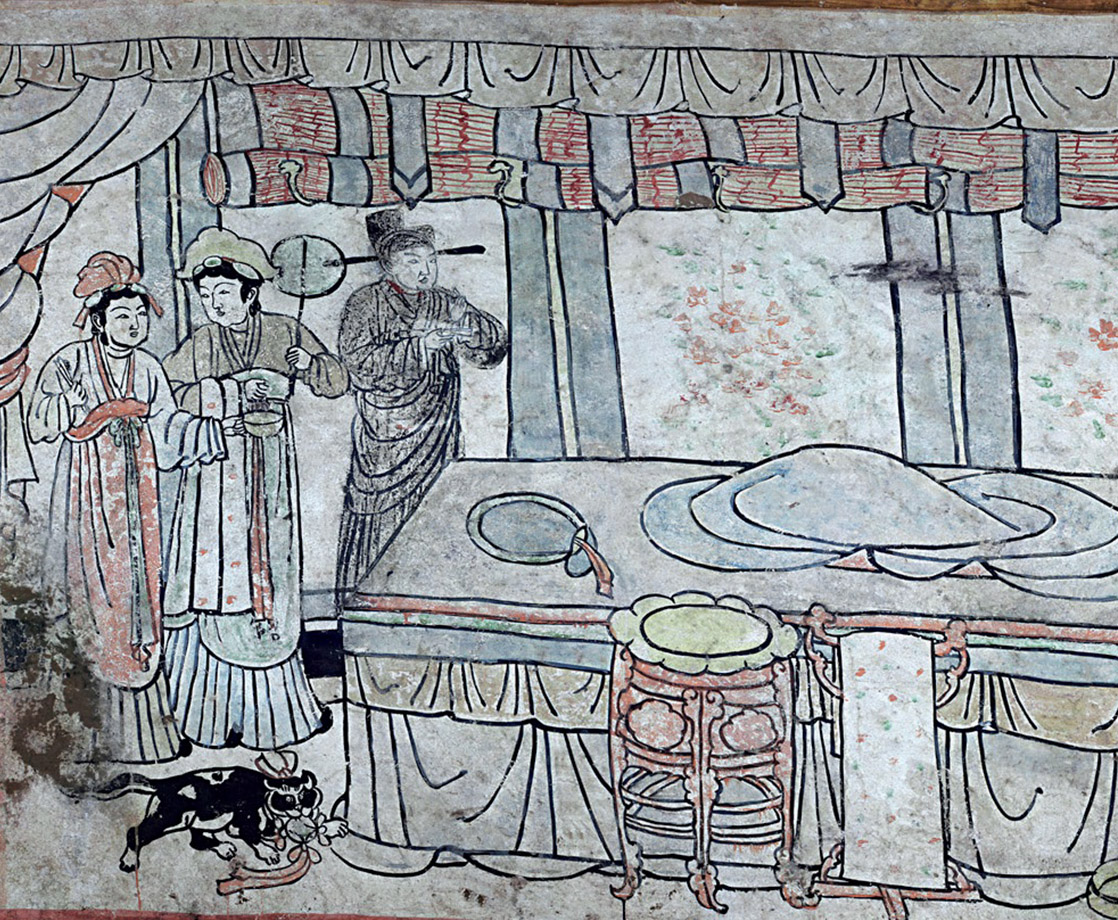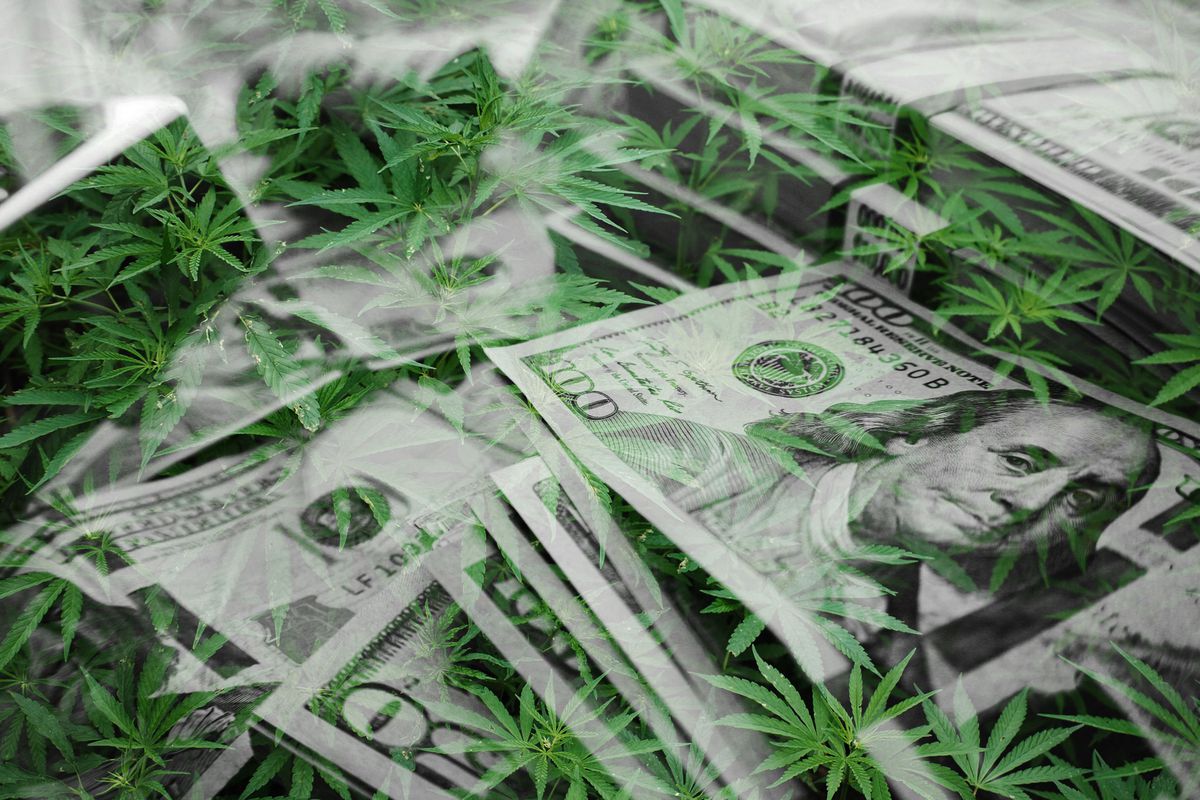All images courtesy of Stephen Jones
The Art of Horror Movies: An Illustrated History is the one book screaming to land inside your trick-or-treat bag this year — just be prepared, because this thing is a monster! Compiled and edited by award-winning fright fiction author Stephen Jones, the huge, heavy, breathtakingly-rendered TAOHM compiles hundreds of exquisitely eerie posters and other promotional materials dating back from the dawn of cinematic terror to the cutting-edge of 21st century scare fare.
In addition to all the incredible imagery, The Art of Horror Movies showcases accompanying essays by top-tier fear writers and a foreword by legendary filmmaker John Landis (Animal House, An American Werewolf in London). Stephen Jones took some time to talk to MERRY JANE about TAOHM. In every sense, this guy is a hell-raiser.

MERRY JANE: How did The Art of Horror Movies come to be?
Stephen Jones: To be honest, The Art of Horror Movies was a no-brainer for me. A couple of years ago I did a book called The Art of Horror: An Illustrated History for the same publisher (Applause/Hal Leonard) and it did very well, even winning a couple of awards. When I was asked to come up with a follow-up, I pitched The Art of Horror Movies.
I have some background in the horror movie industry — including the first three Hellraiser movies — and have published a number of film-related books over the years. I also learned a lot from putting that first book together, and used that knowledge with the new volume, which allowed me to push the format a bit further. Also, the first book was a lot of fun to do, and I wanted to repeat that experience.
The artists featured in the book are incredible. Can you tell us about three, in particular, that always bowl you over with their genius?
Well, I'm not sure that I can limit it to just three! When we were first talking about the book, I immediately said that there were two images that we had to include if we could: Rolf Armstrong's pastel portrait of Boris Karloff that was done during the filming of Bride of Frankenstein and Ivan Albright's portrait of "The Picture of Dorian Gray," which was done for the 1945 movie and currently hangs in the Art Institute of Chicago. I said that if we could get those two, I'd be a happy editor and that everything would flow from that. And we got them both!
The other obvious choice was the great Basil Gogos, who sadly passed away a couple of months ago, before he could see the finished book. I grew up being blown away by Basil's amazing paintings on the covers of Forrest J Ackerman's Famous Monsters of Filmland magazine during the 1960s and '70s. We could have used a lot more than we did, but I'm delighted that his portrait of Vincent Price from House of Wax (1953) ended up being used on the cover.
I'm also really proud that we use the work of British artist Dave McKean, who is an old friend. Dave is perhaps best known for his covers for Neil Gaiman's Sandman comics and is a talented filmmaker himself. His incredible collages are among the high points of the book, but all the original art was chosen because of its quality and variety.

Psycho Blood Red by Brian Ewing, courtesy of Stephen Jones
Have you ever actually been frightened by a movie poster itself?
I don't think I've ever been actually scared by a movie poster. Intrigued, yes. Excited, yes. As John Landis says in his foreword, "From the earliest days of cinema, advertising art was produced to persuade the public to purchase tickets for the movie being marketed," and that is still true today. I'm more likely to be awed by a poster, than actually scared of it.
What are your three favorite horror movies? How are their posters?
My "favorites" change with repeated viewings and getting older. That said, my all-time favorite is still the original King Kong, which I still consider one of the greatest films ever made and which has a wealth of impressive publicity materials.
After that, it's up for grabs, and my choices change with my moods and my knowledge and appreciation. I'm certainly a huge fan of the Universal Monsters of the 1930s and '40s; Val Lewton's subtle terrors of the 1940s; and Roger Corman's and Hammer's output during the 1950s and '60s.
But how can you compare Witchfinder General and The Wicker Man? You can't — they're both great films. There are so many marvelous horror movies, it would be impossible for me to single out just a few, and the book is a celebration of that!

Freddy Krueger by Godmachine, courtesy of Stephen Jones
How did John Landis come to write the foreword?
Simple answer: I asked him. I've known John for around twenty years, and I know that at heart he is as much a fan-boy as I am. He is also an incredibly enthusiastic and knowledgeable person about this stuff. I knew he would love a book like this, so he seemed to be the perfect person to ask — especially given the many successful genre movies he has made over the years. An American Werewolf in London (1981) is still one of the biggest cult horror movies of all time. Luckily, he said yes as soon as I asked.
Can you tell us about the "trippiest," most psychedelic artists and artworks in the book?
Now that's a question I've never been asked before! Actually, it's not that difficult — I think the "trippiest" image in the book is definitely Australian artist Nicky Barkla's colorful, psychedelic oil portrait of Johnny Depp as Edward Scissorhands. It's almost like she was on drugs when she painted it!
But there are many other outré images that induce the same effect: Mark Hammermeister's scarily distorted digital illustration of Bruce Campbell from the Evil Dead series, Jeff Stahl's creepy portrait of Stephen King, or Italian artist Alex Horley's tribute to Rob Zombie.
Perhaps the weirdest images in the book are the depictions of movie posters painted by local artists on split canvas flour sacks in such West African countries as Ghana and Nigeria. Done in the 1980s and '90s during the videocassette boom, these really have to be seen to believed, and we have a number of crazy examples in the book.

White Zombie by Jeff Preston, courtesy of Stephen Jones
What is a lesser-known horror film you'd recommend for people to watch while indulging in marijuana or psychedelics?
There's a very cool little 1973 movie called Messiah of Evil that was made in Southern California by director Willard Huyck and producer Gloria Katz — the team behind American Graffiti the same year. It plays out like a hallucinogenic dream as a woman played by Mariana Hill goes looking for her father in a strange coastal town where a "Dark Stranger" returns after 100 years to turn the inhabitants into vampiric zombies.
It's a bit rough around the edges, but it's a fascinating low budget gem that psychedelics would probably take the edge off while also accentuating the script's unusual poetic horrors. Again, I wouldn't be surprised if the cast and crew weren't stoned when they were making it!
What's one horror film you definitely would NOT recommend for anyone to watch while they're stoned or tripping?
I would say pretty much any movie in the "torture porn" genre — the Saw or Hostel movies, or stuff like Wolf Creek or The Purge series. These are nasty enough as it is, and rooted in a twisted and often misogynist version of reality that I suspect would only freak out more somebody who was already tripping. Nobody needs that.
What's next for you?
Well, as always, I'm working on multiple projects at one time, mostly horror anthologies; I have a number out this Halloween. I would like to finish off The Art of Horror trilogy with a third book in the series that looks at the history of the books and stories, and I wouldn't be against doing a Son of the Art of Horror Movies — we barely scratch the surface, despite having more than 600 images in the book!
To order your copy of "The Art of Horror Movies: An Illustrated History," visit here and check out Stephen Jones' website for more of his horror work
Follow Mike McPadden on Twitter











